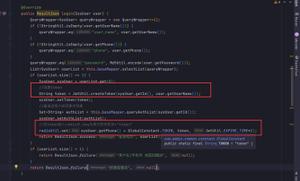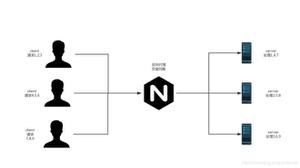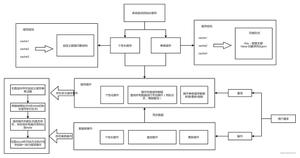Spring Boot中的多态配置属性
我想使用Spring的@ConfigurationProperties注释在Spring上使用多态配置属性。
假设我们有以下POJO类。
public class Base { private String sharedProperty;
public String getSharedProperty() {
return sharedProperty;
}
public String setSharedProperty(String sharedProperty) {
this.sharedProperty = sharedProperty;
}
}
public class Foo extends Base {
private String fooProperty;
public String getFooProperty() {
return fooProperty;
}
public String setFooProperty(String sharedProperty) {
this. fooProperty = fooProperty;
}
}
public class Bar extends Base {
private String barProperty;
public String getSharedProperty() {
return sharedProperty;
}
public String setBarProperty(String barProperty) {
this.barProperty = barProperty;
}
}
和配置属性类,
@Component@ConfigurationProperties(prefix = "playground")
public class SomeConfigurationProperties {
private List<Base> mixed;
public List<Base> getMixed() {
return mixed;
}
public void setMixed(List<Base> mixed) {
this.mixed = mixed;
}
}
还有application.yml文件
playground: mixed:
- shared-property: "shared prop"
foo-property: "foo prop"
- shared-property: "shared prop"
bar-property: "bar prop"
但是,使用这种配置,Spring @ConfigurationProperties使用Base对象列表而不是其子类来初始化-annotated
类。也就是说,实际上是一种预期的行为(由于安全问题)。
有没有一种方法可以强制 SnakeYAML 的行为以使用子类,或实现任何类型的自定义反序列化提供程序?
回答:
尽管可以实现自定义PropertySources和/或ConversionService,但不需要自定义反序列化提供程序。
Spring没有将相同属性绑定到多个bean的问题。您的实现无法正常工作的原因是,您只@Component在基类上带有注释的ApplicationContext中注册了一个bean
。这告诉组件扫描器只有一个单例类型Base。因为Foo和Bar没有注册为bean,所以它们将不受约束。
如果要使这些多态性唯一的原因是在基于 SnakeYAML
的配置中共享属性名称前缀,那么您实际上不需要引入多态性关系,并且可以通过不同类中的公共字段名称绑定到共享属性。
有多种方法可以实现您所要的内容,但是可以采用多态的方式,以下是一些最简单的方法:
回答:
不要将@ConfigurationProperties和@Component注释应用于基类,而是将它们应用于具有相同属性名称前缀的具体类。这不是我的首选方法,因为每个bean都不以其属性设置为条件,但是它可能适合您的需求。根据您的Spring
Configuration是否允许重新加载属性,Spring将维护所有Bean上的绑定。
注意:从IntelliJ Idea 2018.3开始,添加了检查配置文件以将重复的前缀键识别为错误。 您可能要忽略此或取消显示警告。
我成功测试了以下内容:
Base.java
package sample;public class Base {
private String sharedProperty;
public String getSharedProperty() {
return sharedProperty;
}
public void setSharedProperty(String sharedProperty) {
this.sharedProperty = sharedProperty;
}
}
Foo.java
package sample;import org.springframework.boot.context.properties.ConfigurationProperties;
import org.springframework.stereotype.Component;
@Component
@ConfigurationProperties("playground")
public class Foo extends Base {
private String fooProperty;
public String getFooProperty() {
return fooProperty;
}
public void setFooProperty(String fooProperty) {
this.fooProperty = fooProperty;
}
}
Bar.java
package sample;import org.springframework.boot.context.properties.ConfigurationProperties;
import org.springframework.stereotype.Component;
@Component
@ConfigurationProperties("playground")
public class Bar extends Base {
private String barProperty;
public String getBarProperty() {
return barProperty;
}
public void setBarProperty(String barProperty) {
this.barProperty = barProperty;
}
}
application.yml
playground: shared-property: "shared prop"
foo-property: "foo prop"
bar-property: "bar prop"
SampleAppTest.java
package sample;import org.junit.jupiter.api.Test;
import org.springframework.beans.factory.annotation.Autowired;
import org.springframework.boot.test.context.SpringBootTest;
import org.springframework.core.env.Environment;
import java.util.List;
import static org.junit.jupiter.api.Assertions.assertEquals;
@SpringBootTest
public class SampleAppTest {
@Autowired
public Environment environment;
@Test
public void test(@Autowired Bar bar, @Autowired Foo foo) {
assertEquals("shared prop", bar.getSharedProperty());
assertEquals("shared prop", foo.getSharedProperty());
assertEquals("bar prop", bar.getBarProperty());
assertEquals("foo prop", foo.getFooProperty());
}
@Test
public void testSuper(@Autowired List<Base> props) {
assertEquals(2, props.size());
}
}
回答:
如果缺少特定的具体实现,则可能不希望实例化它们。此外,您可能不想将@ConfigurationProperties和@Component注释耦合到每个具体的类。此实现通过Spring
@ConfigurationBean 构造ConfigurationProperties
Bean。配置bean确保仅通过属性存在检查有条件地构造它们。Base如果没有其他Basebean满足条件并且存在共享属性,则此实现还会创建一个具体类型的bean
。这里使用与上一个示例相同的单元测试,并通过:
Base.java
package sample;public class Base {
private String sharedProperty;
public String getSharedProperty() {
return sharedProperty;
}
public void setSharedProperty(String sharedProperty) {
this.sharedProperty = sharedProperty;
}
}
Foo.java
package sample;public class Foo extends Base {
private String fooProperty;
public String getFooProperty() {
return fooProperty;
}
public void setFooProperty(String fooProperty) {
this.fooProperty = fooProperty;
}
}
Bar.java
package sample;public class Bar extends Base {
private String barProperty;
public String getBarProperty() {
return barProperty;
}
public void setBarProperty(String barProperty) {
this.barProperty = barProperty;
}
}
SampleConfiguration.java
package sample;import org.springframework.boot.autoconfigure.condition.ConditionalOnMissingBean;
import org.springframework.boot.autoconfigure.condition.ConditionalOnProperty;
import org.springframework.boot.context.properties.ConfigurationProperties;
import org.springframework.context.annotation.Bean;
import org.springframework.context.annotation.Configuration;
@Configuration
public class SampleConfiguration {
@Bean
@ConfigurationProperties("playground")
@ConditionalOnProperty("playground.foo-property")
public Foo foo() {
return new Foo();
}
@Bean
@ConfigurationProperties("playground")
@ConditionalOnProperty("playground.bar-property")
public Bar bar() {
return new Bar();
}
@Bean
@ConfigurationProperties("playground")
@ConditionalOnProperty("playground.shared-property")
@ConditionalOnMissingBean(Base.class)
public Base base() {
return new Base();
}
}
application.yml
playground: shared-property: "shared prop"
foo-property: "foo prop"
bar-property: "bar prop"
SampleAppTest.java
package sample;import org.junit.jupiter.api.Test;
import org.springframework.beans.factory.annotation.Autowired;
import org.springframework.boot.test.context.SpringBootTest;
import org.springframework.core.env.Environment;
import java.util.List;
import static org.junit.jupiter.api.Assertions.assertEquals;
@SpringBootTest
public class SampleAppTest {
@Autowired
public Environment environment;
@Test
public void test(@Autowired Bar bar, @Autowired Foo foo) {
assertEquals("shared prop", bar.getSharedProperty());
assertEquals("shared prop", foo.getSharedProperty());
assertEquals("bar prop", bar.getBarProperty());
assertEquals("foo prop", foo.getFooProperty());
}
@Test
public void testSuper(@Autowired List<Base> props) {
assertEquals(2, props.size());
}
}
以上是 Spring Boot中的多态配置属性 的全部内容, 来源链接: utcz.com/qa/431947.html









